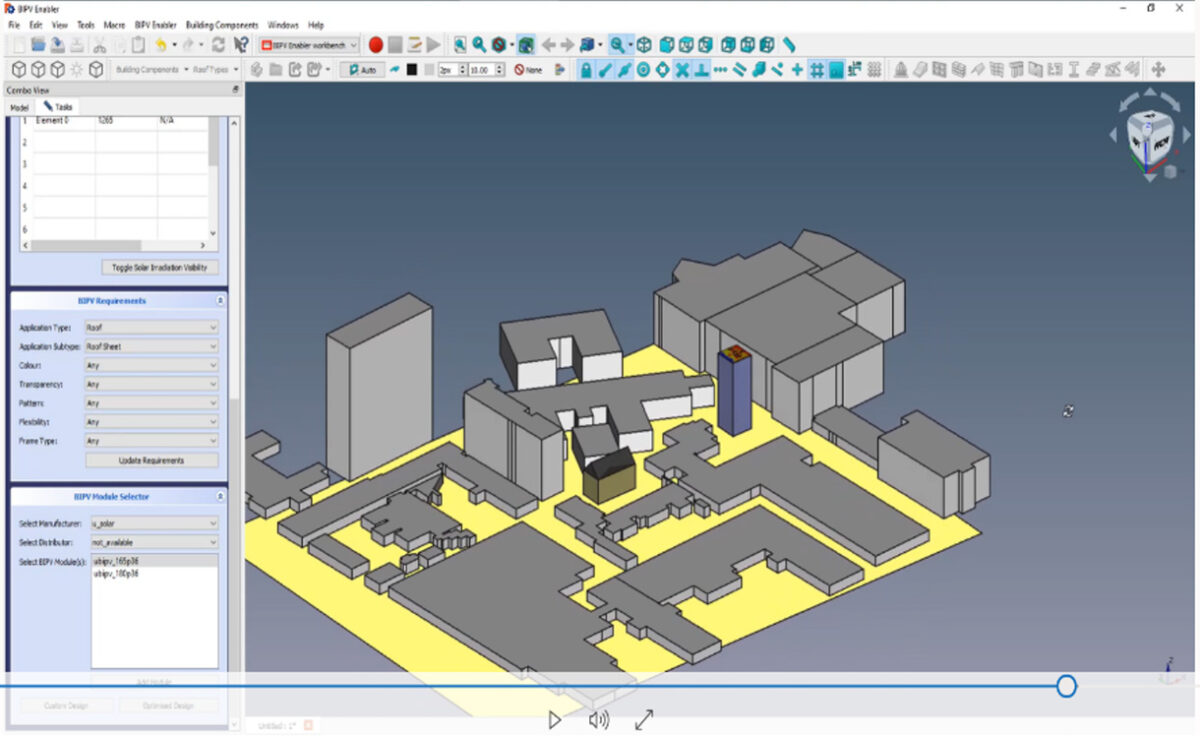BIPV is one of the most promising pathways to net-zero energy buildings, representing an opportunity for hundreds of gigawatts of solar-generating building components to be installed worldwide. However, integrating BIPV into design is not easy, given the vast range of data and technical factors to be considered and the difficulties that designers and developers face in choosing and sourcing materials.
“BIPV design and management is a complex process which involves requirements geophysical, technical, economical and environment factors throughout the life cycle of the system, ranging from acquiring architectural visual effects to higher solar insolation in given location, efficient energy generation and economic operation and maintenance of the BIPV system,” Rebecca Yang, a researcher for RMIT’s Solar Energy Application Group, told pv magazine. “Lack of consideration for PV integration of the building envelope in the early design phase is one of the main reasons for complicating the design and construction process of BIPV systems.”
Yang has led the development of a new tool, BIPV Enabler, which is the first of its kind to combine BIPV product, regulation, technical, economic and construction data. The tool was developed with Australian data and features maps, a 3D shape library, solar visualizations, hourly weather data and pricing information for materials and feed-in tariffs.
“The Zero Carbon Australia Buildings Plan promotes BIPV to reach a full uptake on suitable buildings by 2030. BIPV is at Technology Readiness Level 9, but adoption has been slow in Australia because it reframes distributed solar energy as a building product which needs close collaborations between the PV and building industries,” Yang said. “It is difficult to develop a business case for a BIPV project without accessible information and value-for-money solutions.”
Yang said that BIPV Enabler is the perfect solution for building designers and developers looking to select the right solar option, be it for a new build or an existing building, by retrofitting BIPV.
“We’re making integrated-solar a more attractive option to developers, slicing the time it would normally take to research and implement incognito solar devices,” she said. “Our software aims to translate technical complexities into a packaged, user-friendly platform that integrates product, technical, economic and construction data to create the best BIPV solution for individual building projects.”
Yang, the director of the Australian PV Institute and head of the BIPV Alliance, said that the platform serves building professionals in making design choices and enables PV suppliers to showcase the value of their products to clients.
In BIPV Enabler, users have several key functionalities. They include the ability to select building types and project locations with an interactive map. Users can also create building models using the 3D geometric building shapes library or default arch and draft workbenches within FreeCAD. In addition, the platform allows users to visualize the solar irradiance on the building envelope.
Users can also choose BIPV modules from the product database, which enables the generation of a comprehensive report on the energy output of the BIPV designs. This report encompasses economic and environmental considerations. Users can perform both automatic and manual placement of the BIPV modules to suit their specific needs.
Another valuable feature is the ability to estimate wind loads for BIPV design, ensuring safety and effectiveness. Lastly, the platform allows users to optimize their BIPV designs, taking into account factors such as tilt angles, BIPV product options, window-to-wall ratios, and distance-to-length ratios.
The BIPV product database consists of records of about 80 Australian and international BIPV modules. The data are presented with 13 major attribute categories and 136 sub-attribute categories of BIPV products based on local and international building design codes and construction-related regulatory requirements.
The database contains information on the cost of BIPV modules, including their maintenance expenses. Users can choose to create customized BIPV modules if they prefer. Users additionally have the flexibility to select one or more BIPV modules for either the economic analysis or the optimization process.
The BIPV modules can also be organized based on parameters such as the module technology, transparency, color, patterns frame type. The most dominant module technology in the BIPV Enabler database is mono-crystalline, followed by copper indium gallium selenide (CIGS) and cadmium telluride (CdTe). More than a half of the products are colorful.
The software, funded by RMIT and the Australian Renewable Energy Agency, was initailly announced last year and opened to users mid this year. “We provide a one-year usage for free at this stage,” Yang said.
She claimed that with minimum effort and some funding support, the RMIT team could redesign BIPV Enabler to cover other countries. It is now on the lookout for such collaborative opportunities.
This content is protected by copyright and may not be reused. If you want to cooperate with us and would like to reuse some of our content, please contact: editors@pv-magazine.com.




By submitting this form you agree to pv magazine using your data for the purposes of publishing your comment.
Your personal data will only be disclosed or otherwise transmitted to third parties for the purposes of spam filtering or if this is necessary for technical maintenance of the website. Any other transfer to third parties will not take place unless this is justified on the basis of applicable data protection regulations or if pv magazine is legally obliged to do so.
You may revoke this consent at any time with effect for the future, in which case your personal data will be deleted immediately. Otherwise, your data will be deleted if pv magazine has processed your request or the purpose of data storage is fulfilled.
Further information on data privacy can be found in our Data Protection Policy.